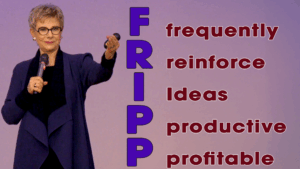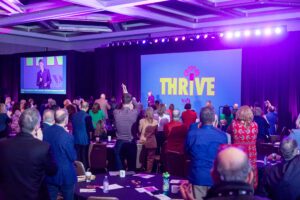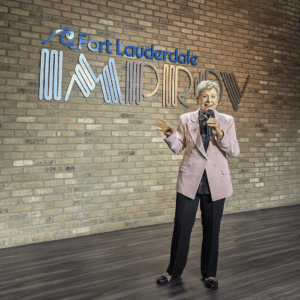Every December, I hear the exact phrase from talented professionals and speakers: “Next year is going to be my best year ever.”
Naturally, I am one of them! However, I am smart enough to know that hope is not a strategy. High performers do not drift into exceptional years. They design them.
If we want the coming year to outperform the last, we must begin with the end in mind. Decide, in advance, what success looks like for you. Not vaguely. Most experts will tell you to focus on how much you want to earn. I am going to encourage you to focus on what work energizes you, and what drains you? Clarity at the beginning increases the likelihood you will make good choices.
One of the most powerful confidence builders I know is the calendar. My late friend Jeanne Robertson taught me a lesson I have shared with executives and speakers for decades: schedule your life before you plan your work. In January, block your vacations, family celebrations, and personal priorities first. Then sell what is left. When you control your calendar, you stop reacting and start leading. That sense of control translates directly into confidence, credibility, and better decision-making.
One highlight for me was saying “No” to speaking engagements because my brother was in town.
For experts, consultants, and speakers, the most innovative way to design a breakthrough year is to turn your expertise into multiple income streams.
Ask yourself: Does your knowledge travel well? Can it be delivered as a keynote, a workshop, a virtual program, coaching, or consulting? The more formats your expertise fits, the more opportunities you create. Versatility is not optional; it is a competitive advantage.
Build your future on what you already know best. When new speakers tell me they want to be “a motivational speaker,” I ask, “Before you were a speaker, what did you do?” Your career, experience, and hard-won lessons are assets. Your most compelling stories and strategies already exist. Use them and deliver them in a way that inspires your audience to take action.
As you evaluate opportunities, remember my three-part filter. Every “yes” should deliver at least two of these: money, experience, or education. If a chance gives you all three, accept gratefully. If it offers only one, decline politely.
Disciplined decisions prevent burnout and build momentum.
Consistency, not brilliance, is what wins year after year.
Consistent outreach. Consistent visibility. Consistent improvement.
People trust and remember what they see repeatedly. Relationship capital compounds over time, and your next opportunity may come from someone who saw you deliver value years ago. Last September, I spoke in Hawaii for a client who booked me 21 years ago. Next week, I will conduct a sales presentation skills training at a company’s January Sales Meeting. Guess what? One of the executives was in my training for another company 21 years ago. That must have been a good year!
We do not get the year we hope for. We will get the year we design.
Your best year is not an accident. It is a decision—followed by disciplined action.
This year, if you want help upgrading your speaking skills, let’s talk.
“Patricia showed us what it means to hold an audience in the palm of your hand—and then told us exactly how to do it. We laughed, learned, and walked away committed to the power of our own presentations. She teaches more than public speaking; she teaches how to put ‘wow’ into every message. If you want better communication from your leaders and associates, Fripp is for you.”
– Renee L. Werth, Vice President of Education & Events, Michigan Credit Union League
Read More...








